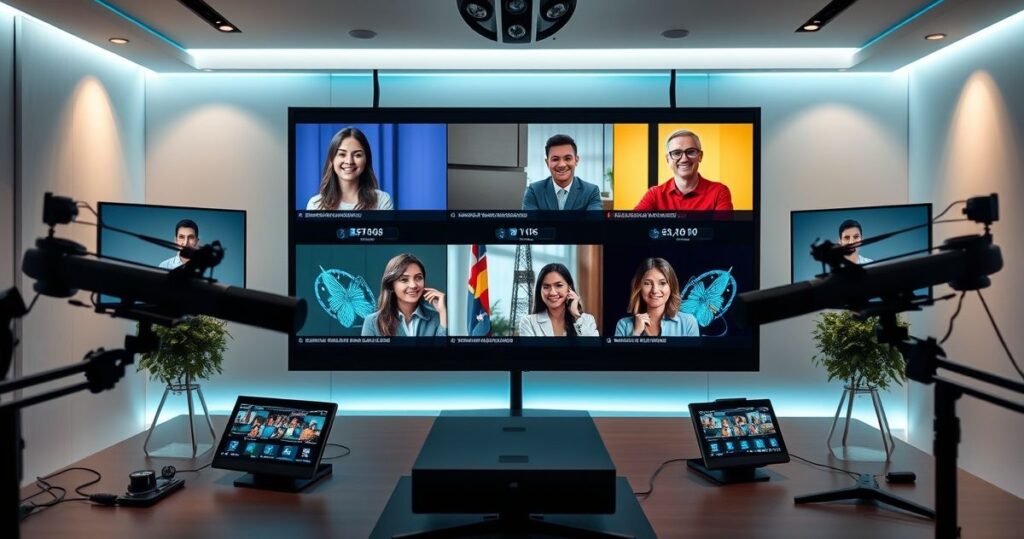How to Manage Panelists and Multiple Speakers in a Webinar

Managing panelists and multiple speakers in a webinar can be a daunting task, but with the right strategies and tools, it can be a seamless and professional experience. Whether you’re hosting a roundtable discussion, a Q&A session, or a multi-speaker presentation, the key to success lies in preparation, communication, and the use of advanced webinar technologies. In this comprehensive guide, we’ll explore expert tips and tools to help you manage panelists and multiple speakers effectively, ensuring your webinar is engaging, well-organized, and impactful.
Why Managing Multiple Speakers is Crucial for Webinar Success
Let’s be honest: webinars are only as good as their speakers. When you have multiple panelists, the dynamics can get tricky. One speaker might dominate the conversation, while another might be too quiet. Technical issues can arise, and coordinating schedules can be a nightmare. But when done right, a panel of experts can provide diverse perspectives, enrich the content, and keep your audience engaged.
So, how do you ensure everything runs smoothly? It starts with preparation and the right tools.
Preparation is Key: Setting the Stage for Success
1. Choose the Right Panelists:
Not all experts are created equal. When selecting panelists, consider their expertise, speaking style, and availability. You want a mix of personalities and perspectives that complement each other. Avoid panelists who might overshadow others or dominate the conversation.
2. Define Roles and Responsibilities:
Clearly outline each panelist’s role and the topics they’ll cover. This prevents overlap and ensures a well-rounded discussion. For example, if you’re hosting a webinar on digital marketing, you might have one panelist focus on SEO, another on social media, and a third on email marketing.
3. Schedule a Pre-Webinar Meeting:
A pre-webinar meeting is essential for ironing out details. Discuss the agenda, technical requirements, and any potential challenges. This is also a great opportunity to build rapport among the panelists and ensure everyone is on the same page.
4. Prepare a Detailed Agenda:
A well-structured agenda is your roadmap to a successful webinar. Share this with your panelists well in advance. Include time allocations for each segment, Q&A sessions, and breaks. This helps keep the discussion on track and ensures all topics are covered.
Tools and Technologies to Streamline the Process
Managing multiple speakers requires more than just preparation; you need the right tools to facilitate smooth communication and coordination.
1. Webinar Platforms with Panelist Features:
Choose a webinar platform that supports multiple speakers and panelists. Look for features like individual speaker views, mute/unmute controls, and the ability to switch between speakers seamlessly. Platforms like Zoom, Webex, and GoToWebinar offer robust features for managing panelists.
2. Collaboration Tools:
Use collaboration tools like Slack or Microsoft Teams to keep everyone connected before and during the webinar. These platforms allow for real-time communication, file sharing, and quick updates.
3. Scripting and Prompter Tools:
For more structured webinars, consider using scripting and prompter tools. These can help panelists stay on track and ensure a smooth flow. Tools like CuePrompter and EasyPrompter are great options.
4. Rehearsal and Recording Tools:
Rehearsals are crucial for identifying potential issues and ensuring everyone is comfortable with the format. Use recording tools to capture these sessions and provide feedback. This can also be a valuable resource for panelists to review before the live event.
Real-World Application: A Case Study
Let’s look at a real-world example. Imagine you’re hosting a webinar on the future of remote work with three panelists: an HR expert, a technology consultant, and a remote work advocate. Here’s how you could manage it:
- Pre-Webinar Meeting: Hold a meeting to discuss the agenda, technical setup, and roles. The HR expert might cover employee well-being, the technology consultant could discuss tools and platforms, and the remote work advocate can share best practices.
- Agenda: Allocate specific time slots for each topic, followed by a Q&A session. Share this agenda with the panelists and the audience.
- Technical Setup: Use a webinar platform that allows for smooth transitions between speakers. Ensure each panelist has a good microphone and webcam.
- During the Webinar: Monitor the discussion, keep the time, and prompt panelists to wrap up their segments when necessary. Use chat and Q&A features to engage the audience.
Challenges and How to Overcome Them
Even with the best preparation, challenges can arise. Here are some common issues and how to address them:
1. Technical Difficulties:
Panelists might face connectivity issues, audio problems, or other technical glitches. To mitigate this, conduct a technical check before the webinar and have a backup plan. Provide panelists with a contact person for immediate support.
2. Uneven Participation:
Some panelists might talk more than others, leading to an unbalanced discussion. Address this by setting clear time limits and gently guiding the conversation if needed.
3. Overlapping Conversations:
Panelists might unintentionally talk over each other. Use a moderator to facilitate the discussion and ensure smooth transitions.
4. Audience Engagement:
With multiple speakers, it can be challenging to keep the audience engaged. Use interactive features like polls, Q&A sessions, and chat to maintain interest and participation.
Conclusion
Managing panelists and multiple speakers in a webinar requires careful planning, clear communication, and the right tools. By choosing the right panelists, defining roles, and using advanced webinar technologies, you can create a seamless and engaging virtual event. Remember, the key to success lies in preparation and the ability to adapt to challenges as they arise. With these expert tips and tools, you’ll be well-equipped to host a professional and impactful webinar.



